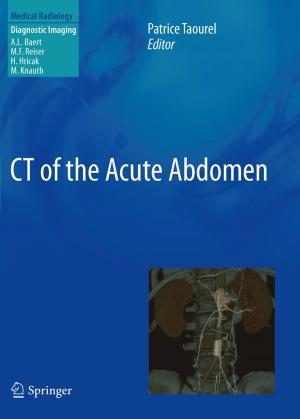The Clinical Anatomy of Coronary Arteries
Nonfiction, Health & Well Being, Medical, Specialties, Internal Medicine, Cardiology, Medical Science, Anatomy| Author: | Michael Lüdinghausen | ISBN: | 9783642558078 |
| Publisher: | Springer Berlin Heidelberg | Publication: | December 6, 2012 |
| Imprint: | Springer | Language: | English |
| Author: | Michael Lüdinghausen |
| ISBN: | 9783642558078 |
| Publisher: | Springer Berlin Heidelberg |
| Publication: | December 6, 2012 |
| Imprint: | Springer |
| Language: | English |
Considerable advances have been made in cardiology during the last few decades. In particular, there has been great progress in the field of coronary angiography both when combined with, and without, computed tomography (CT) and magnetic reso nance (MR) imaging. These techniques of modern imaging allow the cardiologist and coronary surgeon to study every cardiac structure in detail, both two- and three-di mensionally and from either side, to analyze the movements of the heart and valves, and to observe myocardial circulation and even myocardial metabolic processes. However, coronary heart disease, a multifactorial illness of the coronary vessels, still remains the most common cause of death in developed countries. In addition to the large group of patients suffering from coronary heart disease, there is a smaller group of children and adults who are in need of open heart surgery and,most frequently,valve surgery.Avery small number of individuals suffering from Wolff-Parkinson-White syndrome still await competent surgical intervention. These three groups of patients have in common that, for them, meticulous preop erative diagnostics and preparation for surgery are urgently required. Any open heart surgeon who carri es out procedures in the coronary or interventricular grooves or on the atrial walls of the heart must take the normal and anomalous origins,courses, and terminations of cardiac vessels into consideration. Therefore, with the availability of precise anatomical and physiological data,operation time will be shortened, operative risks will diminish, and the safety of the operation for the patient will be greater.
Considerable advances have been made in cardiology during the last few decades. In particular, there has been great progress in the field of coronary angiography both when combined with, and without, computed tomography (CT) and magnetic reso nance (MR) imaging. These techniques of modern imaging allow the cardiologist and coronary surgeon to study every cardiac structure in detail, both two- and three-di mensionally and from either side, to analyze the movements of the heart and valves, and to observe myocardial circulation and even myocardial metabolic processes. However, coronary heart disease, a multifactorial illness of the coronary vessels, still remains the most common cause of death in developed countries. In addition to the large group of patients suffering from coronary heart disease, there is a smaller group of children and adults who are in need of open heart surgery and,most frequently,valve surgery.Avery small number of individuals suffering from Wolff-Parkinson-White syndrome still await competent surgical intervention. These three groups of patients have in common that, for them, meticulous preop erative diagnostics and preparation for surgery are urgently required. Any open heart surgeon who carri es out procedures in the coronary or interventricular grooves or on the atrial walls of the heart must take the normal and anomalous origins,courses, and terminations of cardiac vessels into consideration. Therefore, with the availability of precise anatomical and physiological data,operation time will be shortened, operative risks will diminish, and the safety of the operation for the patient will be greater.















